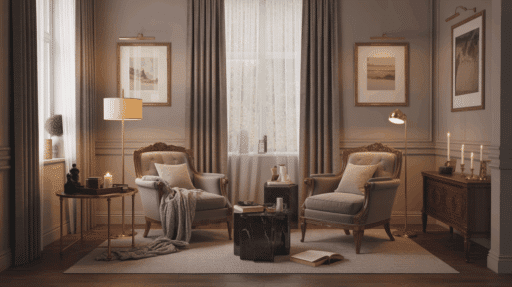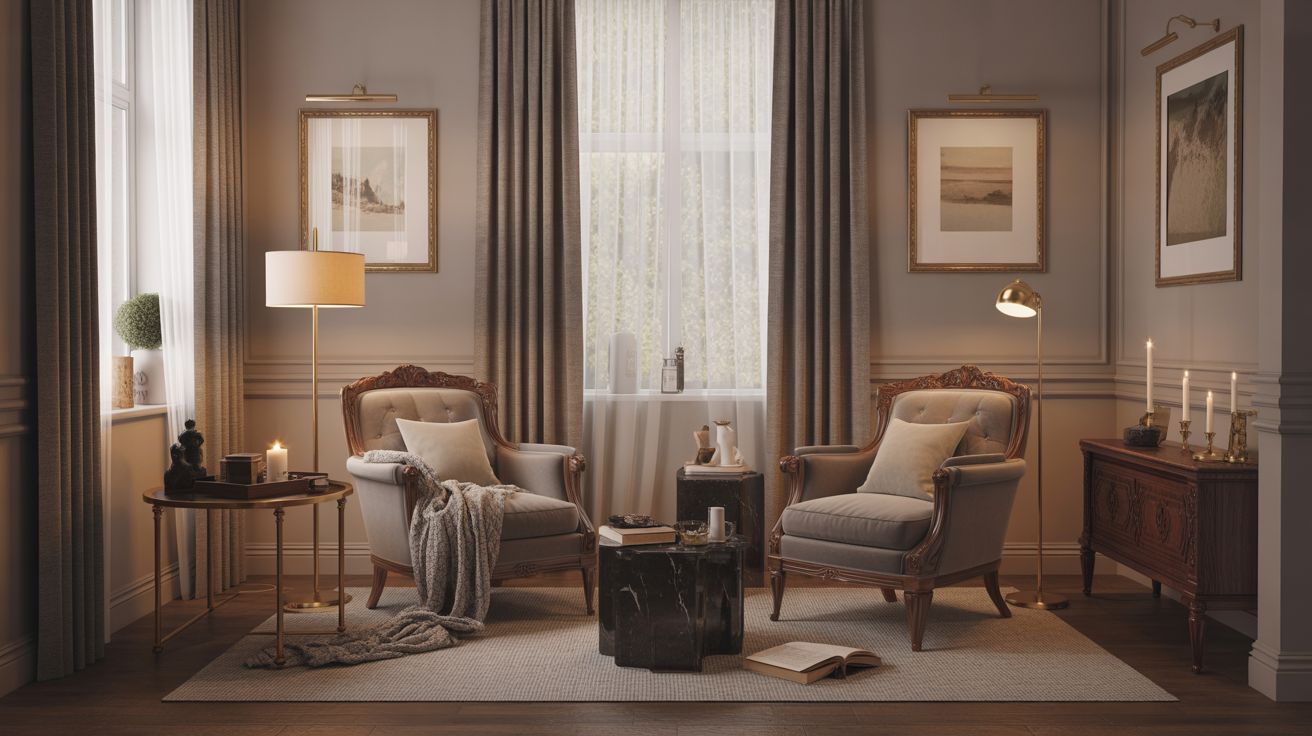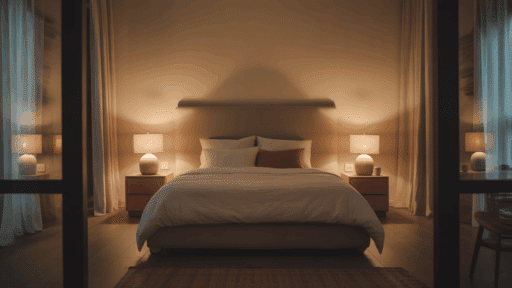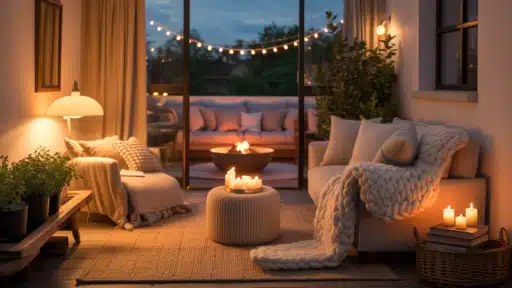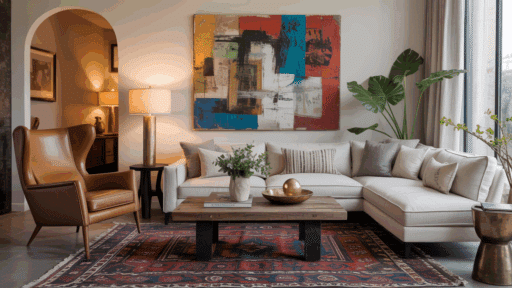Step into a world where ornate gingerbread trim meets clean contemporary lines, where history and modernity dance together in perfect harmony.
The modern Victorian style house represents one of today’s most captivating design trends – preserving the grandeur and character of 19th-century architecture while infusing it with the comfort and functionality we crave today.
Instead, it’s about finding that sweet spot where elaborate crown molding can coexist with sleek furniture, where original hardwood floors provide the foundation for contemporary living.
The result creates homes that feel both classy and thoroughly current.
Today, we’ll walk through room-by-room inspiration, share practical updating strategies, and show you exactly how to achieve this coveted look in your own space.
What Is a Modern Victorian House?
A modern Victorian-style house bridges two distinct eras with remarkable grace. These homes honor their architectural heritage while embracing contemporary living standards and aesthetic preferences.
Victorian architecture dominated American home building from 1837 to 1901, leaving us with distinctive features that still captivate today.
Key elements include soaring ceilings with intricate plasterwork, bay windows that flood rooms with natural light, wraparound porches perfect for evening relaxation, and elaborate exterior millwork that showcases the craftsmanship of the era.
These homes were built during an age of prosperity and optimism, when families wanted their houses to reflect their success and aspirations.
The attention to detail – from hand-carved newel posts to stained glass windows – represents a level of artistry rarely seen in modern construction.
What Makes It “Modern” Today
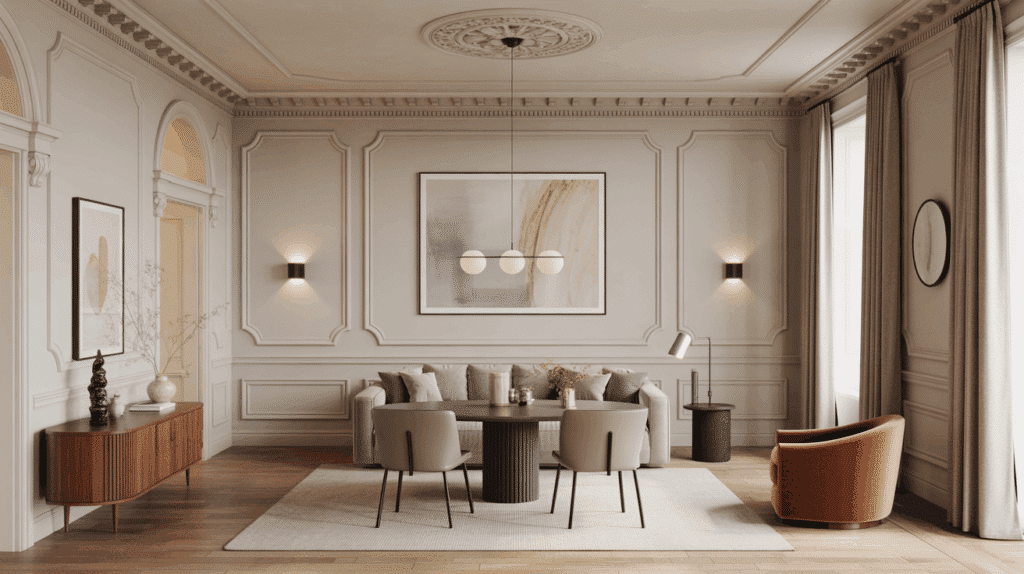
The modern interpretation focuses on editing rather than eliminating Victorian elements. Contemporary updates include simplified color palettes that let architectural details shine, furniture with clean lines that provide visual breathing room.
The key lies in selective preservation, keeping the elements that add character while removing or updating those that feel heavy or dated. This approach creates spaces that honor the past while serving present-day needs.
Success comes from understanding which original features deserve investment and restoration versus which elements can be reimagined for better functionality.
The most beautiful modern Victorian homes feel intentional rather than accidental, where every design choice supports both comfort and character.
Interior Design Ideas for a Modern Victorian Home
The interior of a modern Victorian-style house tells a story of thoughtful evolution. Each room balances original architectural features with contemporary comfort, creating spaces that feel both grand and livable.
1. Living Room Transition
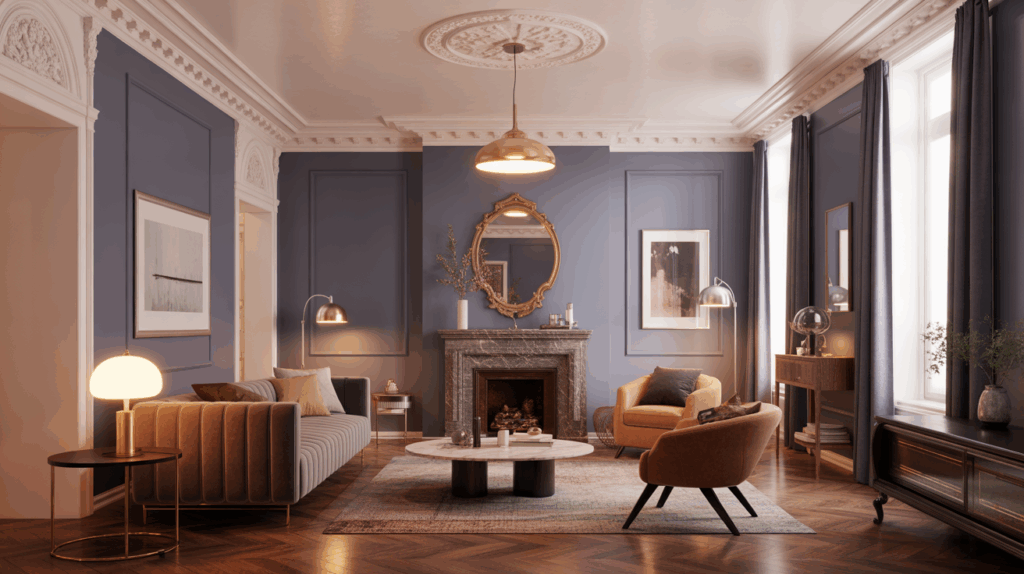
Architectural Elements: Preserve original crown molding, ceiling medallions, and built-in bookcases. These features provide the room’s character foundation and justify the investment in professional restoration when needed.
Furniture Selection: Choose pieces with clean lines in rich fabrics like velvet or linen. A contemporary sectional sofa can anchor the room while vintage accent chairs add personality.
Lighting Strategy: Layer lighting with modern chandeliers, table lamps with linen shades, and strategically placed floor lamps. Avoid overly ornate fixtures that compete with existing architectural details.
2. Kitchen Renovations
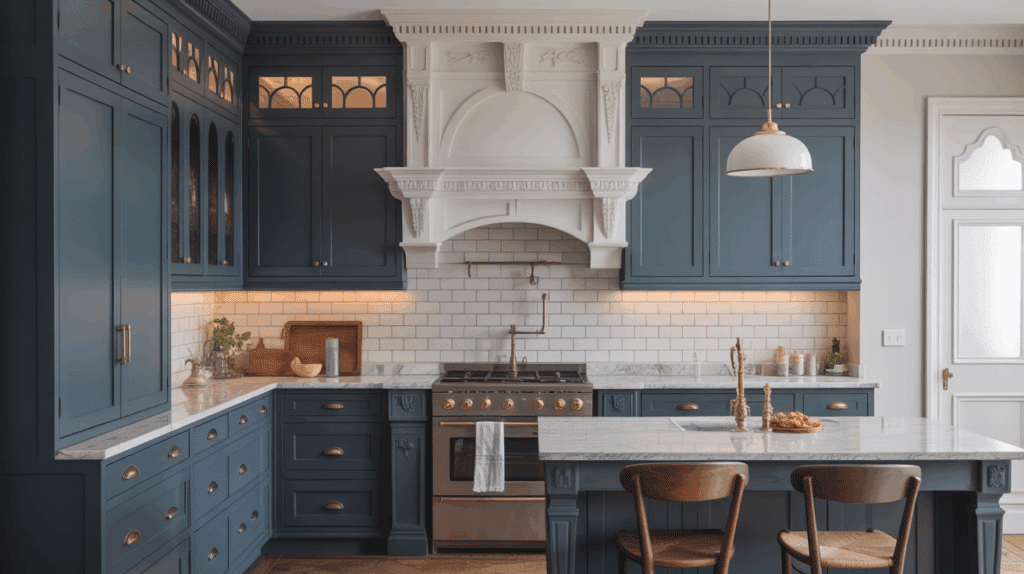
Cabinetry Options: Shaker-style or inset cabinets work beautifully in rich colors like deep navy, forest green, or charcoal. These styles complement Victorian proportions while providing contemporary storage solutions.
Hardware Choices: Brass or satin nickel pulls and knobs add the right amount of sparkle without overwhelming the space. Consider mixing sizes strategically, with larger pulls on drawers, smaller knobs on upper cabinets.
Surface Materials: Subway tiles provide timeless appeal for backsplashes, while marble or quartz countertops offer both beauty and practicality. Choose materials that will age gracefully and complement your home’s character.
3. Bathroom Sanctuaries
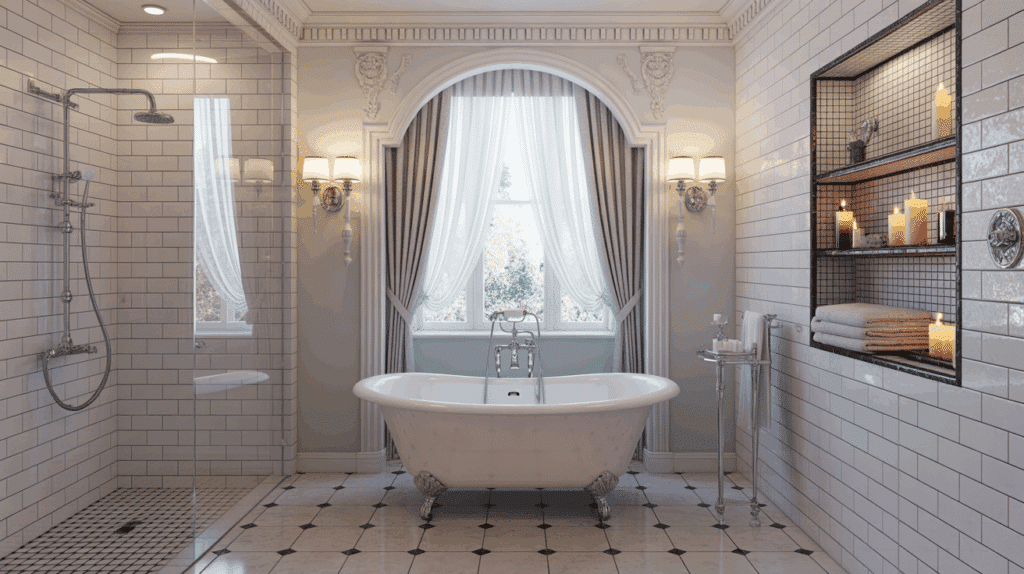
Victorian bathrooms offer endless possibilities for creating spa-like retreats:
Fixtures: Clawfoot tubs serve as stunning focal points, especially when paired with modern rainfall showers. Choose fixtures with clean lines to balance ornate architectural elements.
Tile Selections: Marble floors provide luxury and durability, while small Victorian-inspired mosaic tiles work beautifully as accents. Subway tiles remain timeless for walls.
4. Bedroom Retreats
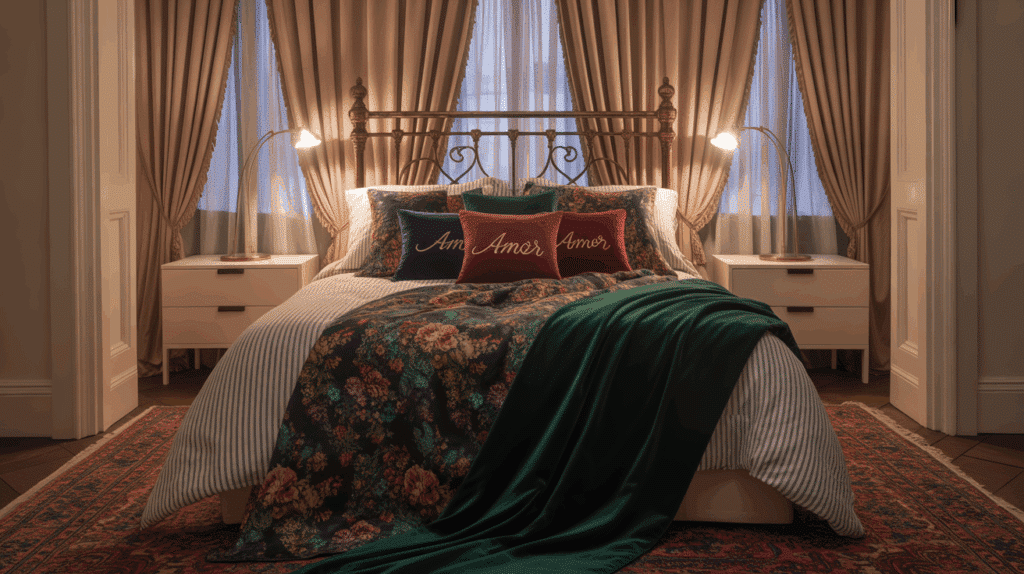
Bed Selection: Wrought iron frames or upholstered headboards with traditional silhouettes work beautifully. Choose pieces that complement your room’s scale and architectural details.
Textile Layering: Mix patterns and textures through bedding, curtains, and throw pillows. Victorian rooms can handle more patterns than contemporary spaces, but modern interpretations keep it sophisticated.
Lighting Options: Bedside sconces free up nightstand space while providing task lighting. Choose styles that complement your room’s overall aesthetic.
5. Finishing Touches Throughout
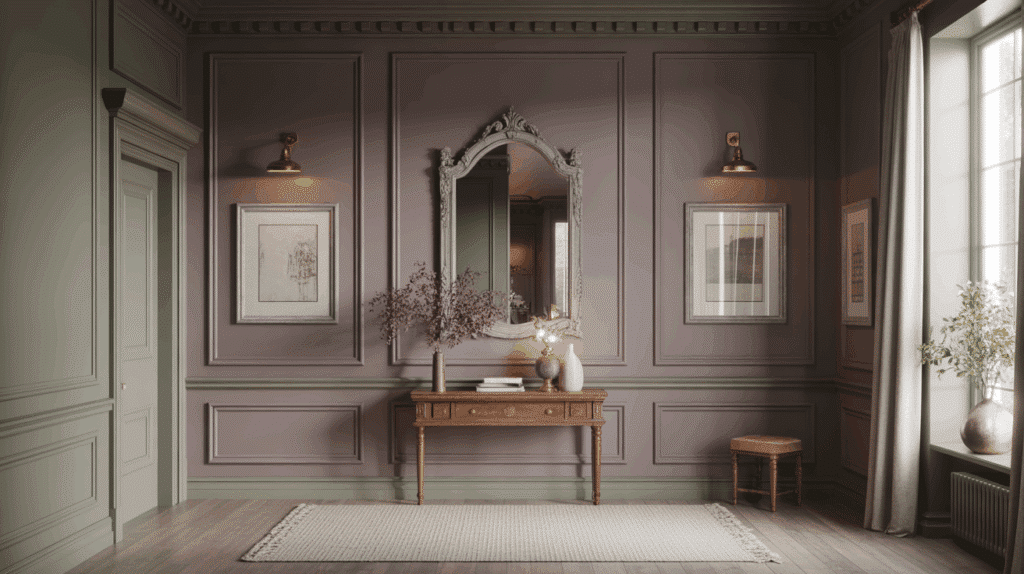
Millwork Strategy: Use crown molding, chair rails, and wainscoting selectively. Not every room needs every detail- choose elements that enhance rather than overwhelm your space.
Color Approach: Rich, muted tones work better than bright colors in Victorian spaces. Consider how colors will look in different lighting conditions throughout the day.
Exterior Design Ideas for a Modern Victorian House
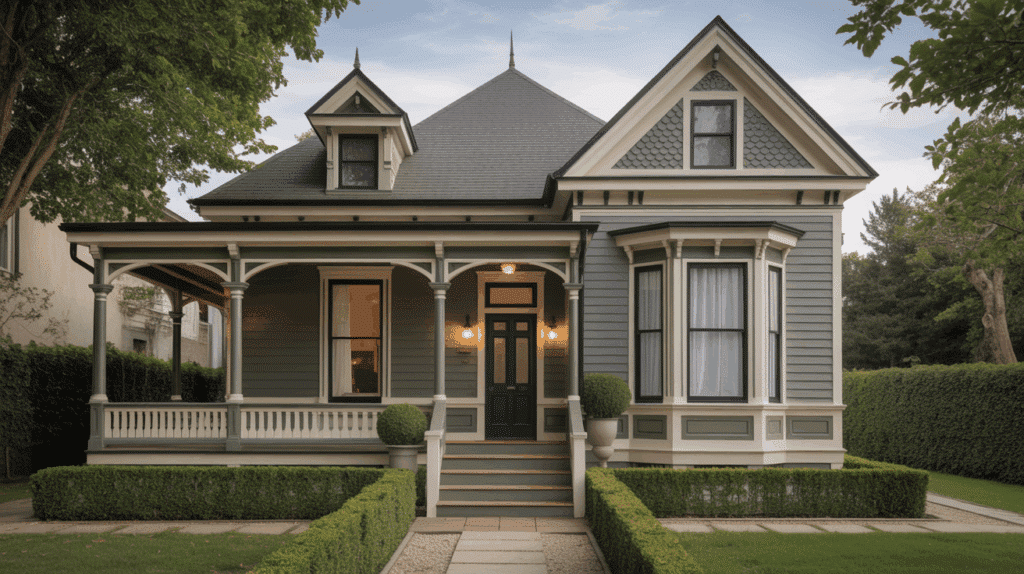
The exterior sets expectations for everything that follows. A thoughtfully updated Victorian exterior honors the home’s heritage while signaling that modern comfort awaits inside.
1. Paint Color Strategies
Color Palette Selection: Monochromatic schemes work beautifully on Victorian homes—try charcoal gray with crisp white trim, or navy blue with cream accents. These combinations feel both timeless and contemporary.
Detail Highlighting: Use contrasting colors sparingly to emphasize architectural details. A front door in deep burgundy or forest green can provide the perfect pop of color without overwhelming the overall scheme.
2. Porch Enhancements
Victorian porches deserve special attention as they often serve as the home’s focal point:
| Porch Element | Traditional Approach | Modern Update |
|---|---|---|
| Flooring | Painted wood boards | Composite decking in wood tones |
| Ceiling | Beadboard with period colors | Fresh paint, possible fan installation |
| Railings | Ornate turned balusters | Restored originals or quality reproductions |
| Seating | Classic wicker or wood | Weather-resistant materials, timeless styles |
3. Window and Door Updates
Window Preservation: Original windows often contribute significantly to your home’s character. Consider restoration rather than replacement when possible, adding storm windows for energy efficiency.
Door Selections: Front doors offer opportunities for personality while maintaining period authenticity. Choose colors that complement your overall palette – deep blues, rich greens, or classic black work beautifully.
4. Landscaping Approaches
Plant Selection: Mix formal elements like boxwood hedges with softer plantings such as climbing roses or ornamental grasses. This combination provides structure while adding seasonal interest.
Hardscape Materials: Use traditional materials like brick, flagstone, or gravel for pathways and patios. These choices complement Victorian architecture while providing practical solutions for outdoor living.
Key Materials and Textures for Modern Victorian Style
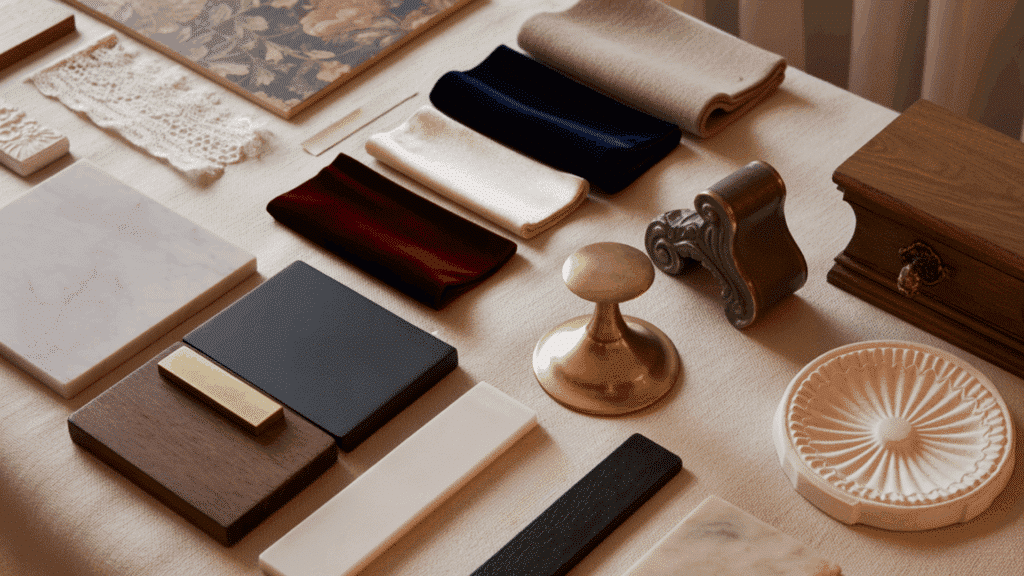
Success in modern Victorian interior design depends heavily on material choices that bridge historical and contemporary aesthetics. Understanding which materials work together creates cohesive, sophisticated spaces.
Essential Material Palette
Luxurious Textiles: Velvet upholstery adds richness without heaviness, while linen provides casual sophistication. Wool rugs ground spaces and add warmth to hardwood floors.
Natural Stone: Marble works beautifully in bathrooms and kitchens, providing both luxury and durability. Consider honed finishes for a more relaxed appearance.
Metal Accents: Brass fixtures and hardware add warmth, while matte black provides contemporary contrast. Avoid mixing too many metal finishes in one space.
Wood Elements: Stained wood showcases craftsmanship in built-ins and floors. Choose finishes that complement rather than compete with existing architectural elements.
Modern Victorian Color Palette Guide

Color choices can make or break a modern Victorian interior design scheme. The right palette enhances architectural details while creating livable, contemporary spaces.
Primary Color Selections
| Color Category | Recommended Shades | Best Applications |
|---|---|---|
| Neutrals | Warm white, soft gray, cream | Walls, trim, and large furniture pieces |
| Rich Tones | Deep navy, forest green, dusty rose | Accent walls, cabinetry, and upholstery |
| Earth Tones | Mushroom, taupe, sage | Secondary spaces, textiles |
| Accent Colors | Antique gold, burgundy, charcoal | Hardware, accessories, art frames |
Application Strategies
Wall Colors: Choose colors that enhance rather than compete with architectural details. Soft, muted tones provide the perfect backdrop for ornate molding and built-ins.
Accent Applications: Use richer colors strategically through textiles, artwork, and accessories. This approach allows for seasonal changes without major renovations.
Where to Shop for Modern Victorian Decor
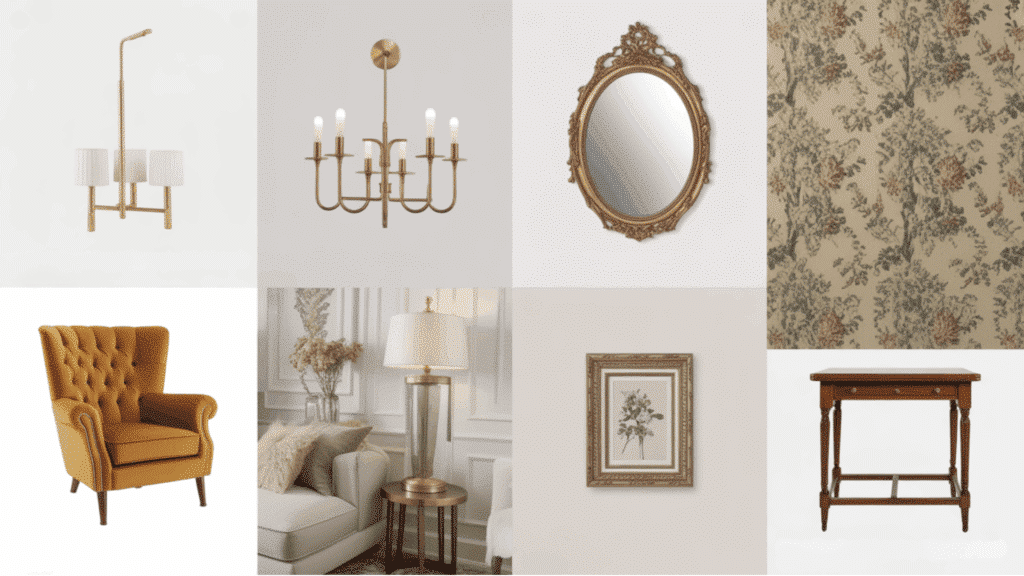
Finding pieces that work in modern Victorian spaces requires knowing which retailers understand this aesthetic balance. These carefully selected sources offer the best combination of style, quality, and authenticity.
Furniture Sources
Anthropologie: Offers furniture with vintage-inspired details and contemporary comfort. Their pieces often feature the ornate touches that work beautifully in Victorian spaces.
Lulu & Georgia: Provides sophisticated pieces that bridge traditional and contemporary styles. Excellent for finding statement lighting and accent furniture.
Urban Outfitters Home: Surprisingly good source for vintage-inspired accessories and smaller furniture pieces at accessible price points.
Lighting and Fixtures
Rejuvenation: Specializes in period-appropriate lighting with modern functionality. Their pieces feel authentic while meeting contemporary electrical codes.
Schoolhouse Electric: Offers clean-lined fixtures that complement rather than compete with Victorian architecture. Perfect for spaces needing understated illumination.
Antiques and Unique Pieces
Chairish: Online marketplace for authenticated vintage and antique pieces. Excellent for finding one-of-a-kind items that add personality to your space.
Etsy: Great source for handmade and vintage accessories, artwork, and smaller furniture pieces. Search carefully and read reviews for the best results.
Local Markets: Estate sales and antique shops often yield the most authentic pieces at reasonable prices. Develop relationships with dealers who understand your style preferences.
Bringing Your Victorian Vision to Life
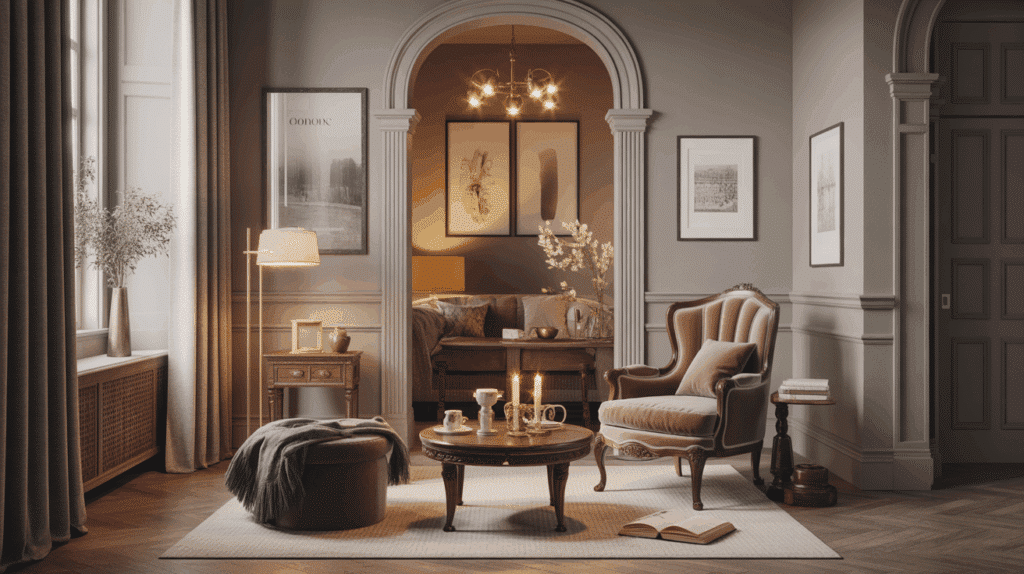
Successful modern Victorian interior design requires careful planning and thoughtful execution. Understanding how others have achieved this balance provides valuable guidance for your own projects.
Planning Your Updates
Room Prioritization: Start with high-impact spaces like kitchens and bathrooms where updates provide both aesthetic and functional improvements.
Budget Allocation: Invest in architectural restoration first, then layer in furniture and accessories over time. This approach ensures your foundation remains strong while allowing flexibility in decorating choices.
Timeline Considerations: Victorian renovations often uncover surprises that require additional time and budget. Plan accordingly and build cushions into both schedule and finances.
Professional Guidance
When to Hire Help: Complex millwork restoration, electrical updates, and structural changes require professional expertise. Don’t compromise on safety or quality for these critical elements.
Design Support: Consider hiring a designer familiar with historic homes for major renovations. Their expertise can prevent costly mistakes and ensure historically appropriate solutions.
Final Thoughts
Modern Victorian interior design succeeds when it honors the past while embracing present-day living. The key lies in selective preservation – keeping elements that add character while updating those that feel outdated or impractical.
Focus on quality over quantity when making updates. A few well-chosen pieces or carefully executed renovations create more impact than numerous small changes.
Remember that these homes have survived for over a century because they were built with quality materials and craftsmanship – your updates should meet the same standards.
Which room in your Victorian home needs attention first? Share your renovation dreams and challenges, every Victorian homeowner has stories, and we’d love to hear yours!

